Punia was first mentioned in written sources back in 1382; however, there are assumptions stating that the famous battle of Pilėnai actually took place on the mound of Punia. Records say it took place in 1336 and that the defenders of the castle and the residents decided to die in flames rather than surrender.
The town is situated 3 km to the west from the road Druskininkai–Jieznas, on the right bank of the upper Nemunas. According to historians, Punia is one of the fourteen old and first Lithuania’s towns. Its coat of arms features St. Stanislaw resurrecting Peter (Piotr, Piotrovin) on the front silver background; and a horseshoe upside down with a silver arrow and a red feather emerging from the horseshoe – on the blue background.
Punia is the place where the Regional Park of Nemunas Loops (Nemuno Kilpų Regioninis Parkas) begins its journey. There is a recreation ground with benches and a parking lot next to the church in the town. There are special places for recreation at the foot of the mound, and there is a mobile wharf on the Nemunas riverside.
Architecture of St. Jacob the Apostle church combines baroque and classical style. It was built in 1863. Meanwhile, the first church in Punia was built back in 1425. They say that Vytautas the Great ordered to build it, for this reason, he has been commemorated until nowadays – there is a portrait of the duke next to the coat of arms of Punia in the church. Vytautas the Great liked Punia very much and defended it from enemies on a number of occasions. He also had his residence here. As Guillebert de Lannoy, a Flemish traveller and diplomat and adviser to the Burgundy duke, who visited the Grand Duchy of Lithuania in 1412-1413, stated, to meet Vytautas the Great he had to go to Punia. The grand duke spent two months a year here. The traveller also told that he met the duke’s wife and daughter in the residence as well.
Church of St. Jacob the Apostle in Punia is part of St. Jacob's Trail in Lithuania.
The tower-shaped masonry chapel of St. George was designed in commemoration of the participants of the rebellion of 1831. The then parson of Punia Juozapas Klikovičius took part in the rebellion, later he was hiding but was arrested in Kalvarija in 1837. It is thought that the modern-day chapel stands exactly where the first church of Punia was built.
The Punia Mound is one of the biggest and most beautiful in Lithuania. It is situated at the confluence of the rivers Nemunas and Punelė. The mound can be easily found – there is a path from the church leading to the west, one has to take the path and follow it for about 200 metres. There is a legend telling that the duke Margiris had his castle on the mound of Punia and it was called Pilėnai. The mound saw the famous battle of Pilėnai in 1336. Defenders of the castle and residents chose to die in flames rather than surrender and be brought into captivity by the crusaders.
According to the legend, on the opposite side of the Nemunas, on the Mound of Rumbonys, there used to be underground caves in the basement of the castle even under the Nemunas. They wound their way for several kilometres and reached the Castle of Punia. The crusaders would not have conquered the castle of Punia, even if they had not found these underground tunnels which were used by Margiris’ knights to bring some food and weapons from the castle of Rumbonys. Unfortunately, somebody turned traitor and was tempted by offered treasures. The traitor showed the secret underground way and the crusaders managed to invade the fortress of Punia.
After thorough explorations of the mound, archaeologists identified that there was a castle on the mound in the 13th and 14th century which was burnt down. A new castle was built instead in the 15th century. However, the latter also burnt down in less than a century and at the end of the 16th century a new big mansion was built here. Later it simply rotted away.
At the foot of the mound, the spring of Nečiuika falls into the stream of Punelė. The spring was named after a masonry which used to stand nearby.
On the top of the mound, spectacular scenery can be enjoyed: a wide strip of the Nemunas river and Punia forest, which is part of the Regional Park of the Nemunas Loops and is one of the oldest, highest and most interesting forests in Lithuania in botanical terms, is surrounded by water from all sides. The forest has the highest pine in Lithuania, many admire the alley of centenary oaks, the history of the country is reminded by the model of the partisan headquarters bunker of Dainava county; diversity of the forest nature can be discovered in the museum of the forestry office.
The old Jewish cemetery of Punia is found near the Punelė stream going down towards the mobile wharf.
Cemetery of the town features the monuments of the small-scale architecture, namely, the old wooden crosses of dzūkai (native inhabitants of the region).
Late July Punia traditionally celebrates the feast of fresh bread or the name-day of Ona.
Authors of photographs: Z. Baubonis, E. I. Fedaravičiūtė, Ž. Sinkevičius, J. Struckienė, M. Šematulskis, archive of Alytus Tourism Information Centre.



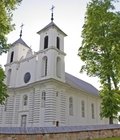
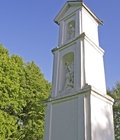
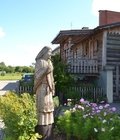

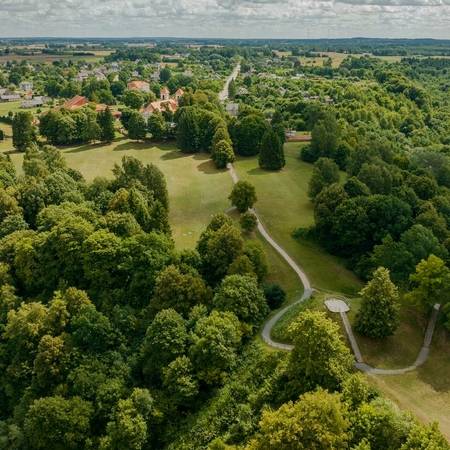

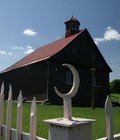
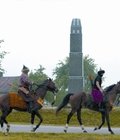

Idomus aprasymas kad nusprendziau vasara apsilankyti ir savo akimis ta grozi pamatyti